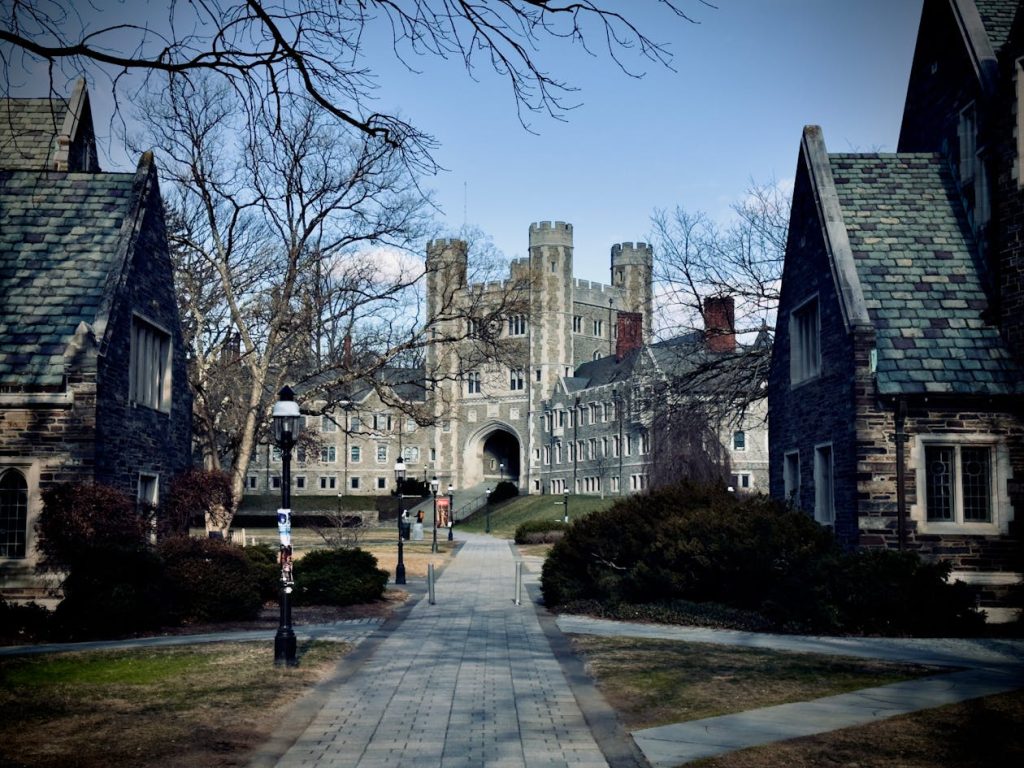Your cart is currently empty!
Princeton Just Changed Higher Education Forever: Families Earning Under $250K Won’t Pay a Single Dollar in Tuition

An Ivy League institution just made a move that could reshape college access in America. But timing suggests more than generosity may be at play.
Elite universities guard their exclusivity like dragons hoarding gold. Acceptance rates hover in single digits. Price tags balloon past $90,000 per year. Families earning solid middle-class incomes get squeezed out of financial aid while staring down costs that would bankrupt most households.
Princeton University just blew that model apart.
In August, the Ivy League powerhouse announced that most families earning up to $250,000 annually will pay zero tuition starting this fall. Families making under $150,000 will pay nothing at all, not tuition, not housing, not food, not a single textbook. About 69% of incoming students will receive grant aid that never needs repayment.
On paper, it looks like educational altruism at its finest. Dig deeper and you find a $34 billion endowment, a new 8% federal tax on university wealth, and a Trump administration that has spent months hammering colleges with threats, funding cuts, and political pressure. Princeton may be leading a revolution in college affordability. Or it may be making a calculated financial move dressed up as generosity.
Either way, higher education has just changed.
Breaking Down Who Gets What
Princeton’s new financial aid structure operates in three tiers, each more generous than what virtually any other university in America offers.
Families earning up to $150,000 annually pay absolutely nothing. Princeton covers the total cost of attendance through grants: tuition, room, board, books, personal expenses, everything. Students from these households can attend one of the world’s most elite universities without their families contributing a cent.
Families earning between $150,000 and $250,000 pay no tuition but may contribute toward housing and other expenses. Given that tuition alone runs $65,210, families in this bracket save the bulk of Princeton’s sticker price.
Even families earning up to $350,000 or beyond qualify for grant aid, especially households with multiple children in college. Princeton evaluates each case individually based on family resources, but the message is clear: middle-class and upper-middle-class families no longer face automatic exclusion from financial assistance.
Average aid packages for 2025-26 exceed $80,000. Every dollar comes as a grant, not a loan. Graduates leave campus without student debt, crushing their financial futures. Princeton eliminated loans from its aid packages in 2001, becoming the first university in America to do so.
From $65K to $250K in Three Years
Princeton didn’t arrive at this policy overnight. Just three years ago in 2022, the income threshold for full financial aid sat at $65,000. That year, Princeton raised it to $100,000, a move that generated headlines celebrating increased access.
Jumping from $100,000 to $250,000 in three years represents acceleration, not gradual evolution. Something changed between 2022 and 2025 to push Princeton toward radically expanded aid.
Among Ivy League schools, Princeton now leads in generosity. Harvard expanded its policy in March to eliminate tuition for families earning up to $200,000, previously considered the gold standard. Cornell provides full aid only to families making under $75,000. Yale, Penn, and others fall somewhere between.
Princeton’s move forces competitors to consider whether they can afford not to follow suit. Talented students from families earning $180,000 now face a choice: pay full price at Harvard or pay nothing at Princeton. Competitive advantage in higher education often comes down to who can afford to be most generous.
A $34 Billion Endowment and an 8% Tax Problem

Princeton’s endowment holds roughly $34.1 billion in assets. Over the past decade, that fund averaged 9.2% annual returns, spinning off enormous sums that support university operations, research, faculty salaries, and financial aid.
Enter President Donald Trump’s “One Big Beautiful Bill,” passed earlier this year. Buried in that legislation sits a tiered tax on university endowments, with rates climbing as high as 8% on investment income. Princeton faces a potential $217 million annual tax bill, according to analysis by the American Enterprise Institute, a conservative think tank.
Universities can reduce their tax liability through specific actions. Expanding student enrollment lowers the asset-per-student ratio that triggers higher tax rates. Increasing financial aid reduces the number of tuition-paying students, another factor in the calculation.
AEI analysts Mark Schneider and Christopher Robinson noted: “The actual revenue generated by the endowment tax might differ from our estimates if universities alter their behavior. If some decide to expand student enrollment, that could lower their tax liability by reducing assets held per student.”
Princeton’s financial aid expansion costs roughly $44 million annually, pushing the budget from $283 million to $327 million, a 15.5% increase. Spending $44 million to potentially save $217 million in taxes makes cold financial sense, even before considering the positive press and competitive recruiting advantage.
Does that make the policy cynical? Not necessarily. Universities can pursue self-interest while simultaneously expanding access. Whether Princeton’s motivation stems from altruism, tax strategy, or both, the outcome remains the same: thousands of students will attend an elite university who couldn’t afford it before.
What $91,000 Buys You at Princeton
Sticker price for attending Princeton during the 2025-26 academic year hits approximately $91,000. That breaks down to $65,210 in tuition, $12,500 for housing, $9,000 for food, just under $300 in fees, and roughly $4,000 for miscellaneous expenses like books and personal costs.
Back in 2000, Princeton’s tuition was $24,630. In 25 years, tuition alone climbed 165%. Housing, food, and other costs followed similar trajectories. Families who could afford Princeton a generation ago now find themselves priced out despite earning solid incomes.
College costs have soared across America, but elite private universities lead the pack. U.S. News data shows average tuition and fees at private, ranked colleges grew more than 5% between 2024 and 2025 alone. A College Ave survey found many families completely unprepared to cover these expenses.
Meanwhile, Americans carry trillions in student loan debt. Millions of graduates spend decades repaying loans that financed degrees they needed to compete in the modern economy. Princeton’s policy eliminates that burden for students it admits, but admission itself remains brutally competitive, with acceptance rates in the low single digits.
Record Number of Low-Income Students Join Class of 2029

Princeton admits roughly 1,409 first-year students for fall 2025. About 25% of those incoming students qualify as low-income and are eligible for federal Pell Grants, up from 21.7% the previous year. That represents the highest percentage of Pell-eligible students in university history.
Provost Jennifer Rexford framed the expansion as mission-driven: “Through our increased investment in financial aid, we are making the transformative experience of a Princeton education more affordable for more students than ever.”
Sixty-nine percent of freshmen qualify for some financial aid. First-generation college students make up 16.7% of the incoming class. Legacy students, children of alumni who historically dominated Ivy League admissions, represent just 12.4%.
Princeton also welcomes 32 transfer students, including 22 who served in the U.S. military across the Air Force, Army, Marines, and Navy. Twenty-seven transfer students come from community colleges, primarily in New Jersey but also from New York and California.
Students hail from 47 states plus Washington, D.C., Guam, Northern Mariana Islands, Puerto Rico, and the U.S. Virgin Islands. International students represent 65 countries from Bolivia to South Korea, comprising 14.1% of the class.
Demographic Shifts in the Incoming Class

Class of 2029 demographics reveal notable shifts, some expected and others surprising. Asian American students now represent 27.1% of incoming freshmen, up from 23.8% the previous year. Students identifying as Black or African American dropped to 5%, down from 8.9% last year. Hispanic or Latino students held at 9.2%, multiracial students at 7.7%, and white students fell to 28.5% from 31.3%.
Perhaps most telling, 8.2% of incoming students chose not to identify their race, up from 7% last year and 5.5% two years prior. Princeton attributes that trend to the Supreme Court’s 2023 decision limiting consideration of race in admissions. Students increasingly decline to provide racial data when they believe it might hurt their chances or when they oppose race-conscious admissions on principle.
Nearly two-thirds of students indicated interest in a Bachelor of Arts degree, while 27.3% lean toward the Bachelor of Science in engineering. About 66% of students expressed interest in arts and sciences, underscoring Princeton’s strength in traditional liberal arts education alongside its engineering programs.
How Princeton Stacks Up Against the Competition
Every Ivy League school now offers full tuition to students from low-income families, though income thresholds vary wildly. Cornell draws the line at $75,000. Harvard recently expanded to $200,000 for full aid and $100,000 for completely free attendance. MIT increased aid for middle-income families as well.
Princeton’s $250,000 threshold for zero tuition and $150,000 for full cost coverage puts it ahead of all competitors. For families shopping for elite universities, and make no mistake that college admissions has become transactional shopping for many, Princeton offers the best financial deal available.
Yet even as Princeton expands aid, other elite institutions face financial pressure. Harvard, Yale, and Stanford have reportedly laid off staff and imposed hiring freezes. Endowment taxes, reduced federal funding, and political scrutiny create budget constraints that make generosity harder.
Endowment Money Powers the Expansion

Endowment payouts dedicated to financial aid cover almost 70% of Princeton’s undergraduate financial aid budget. Alumni contributions and other donations fund the remainder. Princeton’s endowment averaged 9.2% annual returns over the past decade, generating enormous sums that make expanded aid financially feasible.
Schools without comparable endowments cannot match Princeton’s generosity. Regional universities, state schools, and smaller private colleges lack the resources to eliminate tuition for families earning $250,000. Elite institutions with massive endowments can afford aid expansions that remain impossible for most of American higher education.
That creates a growing divide. Well-funded universities become more accessible while less-wealthy schools struggle to compete. Students who get admitted to Princeton can attend regardless of family income. Students who don’t get into face-limited options and mounting debt at other institutions.
Political Pressure Meets Educational Access

Princeton’s announcement comes months after the Trump administration suspended dozens of research grants to the university in April. Universities across America face similar pressure as the administration threatens funding cuts, imposes new taxes, and demands compliance with various political priorities.
Colleges sit in an uncomfortable position, caught between commitment to educational access and government pressure to change how they operate. Endowment taxes represent one pressure point. Threats to withdraw federal grants create another. Public criticism from political leaders adds reputational risk.
Whether Princeton’s aid expansion represents genuine mission commitment or strategic response to political and financial pressure remains open to interpretation. Universities rarely operate from a single motivation. Financial calculations, mission values, competitive pressures, and political realities all influence major policy decisions.
What Happens Next
Class of 2029 moves onto campus in late August with first-year programming beginning later this month. Students will experience Princeton under the new financial aid structure, with roughly two-thirds receiving grant aid and many paying nothing at all.
Other elite universities will watch closely. Can they maintain competitive recruiting without matching Princeton’s generosity? Will students choose Princeton over Harvard, Yale, or Stanford based purely on financial considerations? How will endowment taxes affect their own budget planning?
Princeton may have just started a financial aid arms race among elite universities, each trying to outbid competitors for talented students. Or Princeton may stand alone, willing to spend more on access than peer institutions can justify.
For thousands of families previously priced out of elite education, Princeton’s move opens doors that seemed permanently closed. Whether other universities follow remains the next chapter in a story that could reshape American higher education or leave Princeton as a generous outlier in an otherwise unchanged system.
